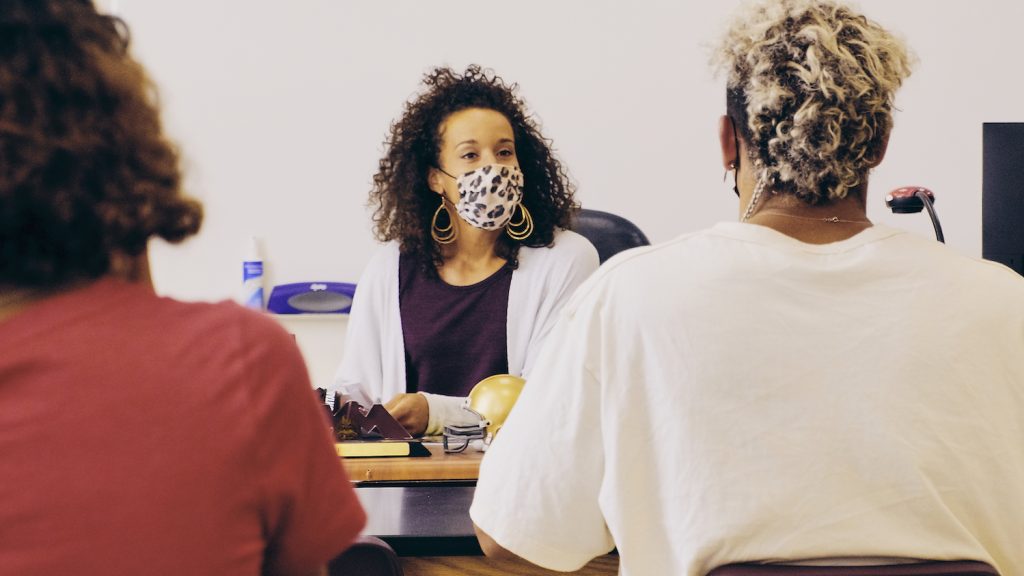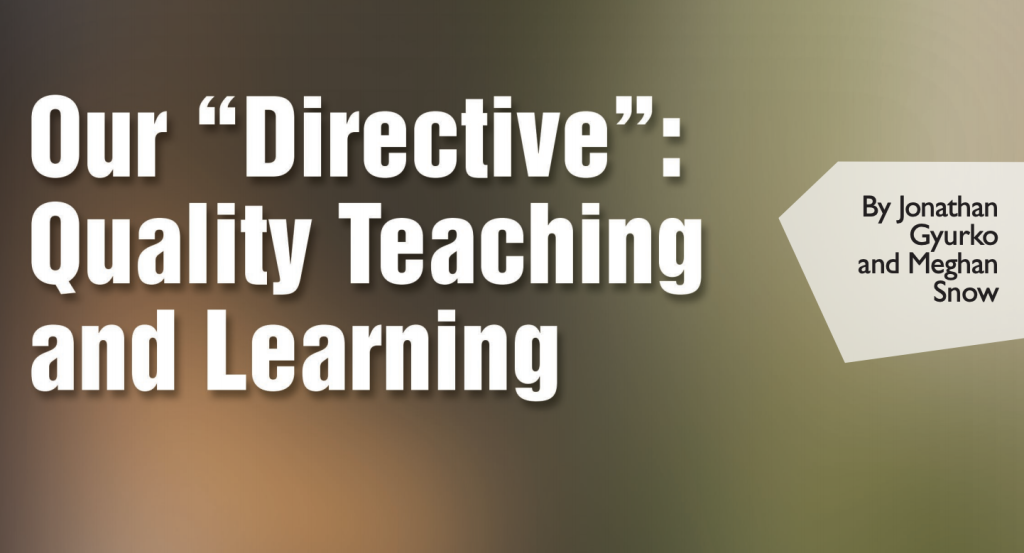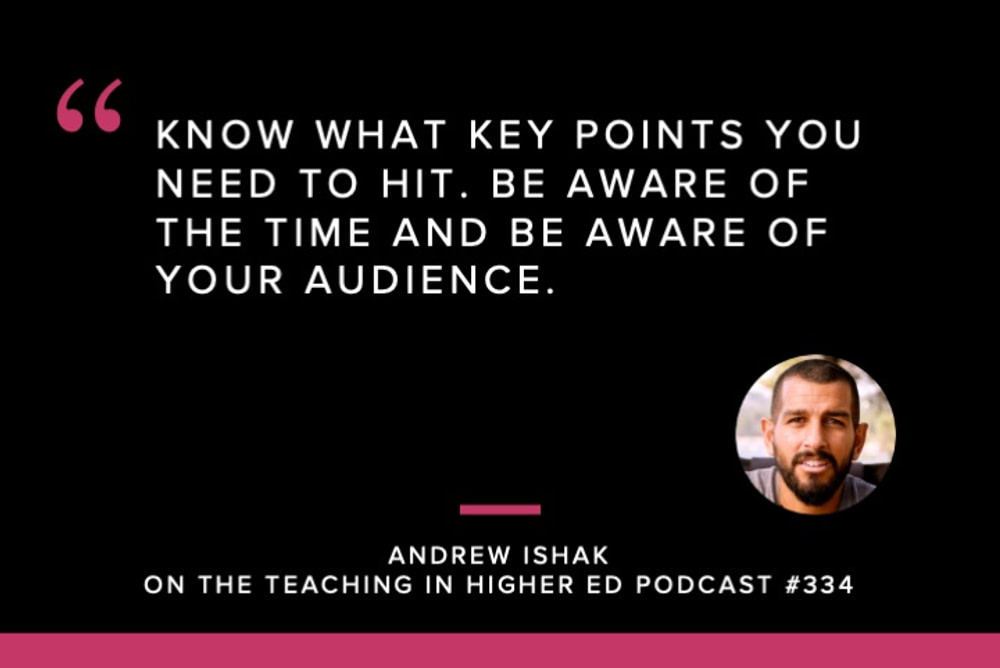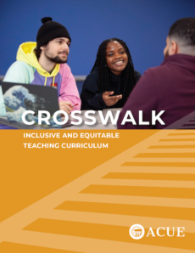
Florida A&M University Faculty Focus on Educating 21st Century Students
FAMU Faculty Pursue Instructional Excellence through ACUE Programs

Dr. Rebecca Blankenship, an educator of nearly twenty years, recognizes the most effective teachers are the ones who aren’t afraid to regularly reflect on their teaching methods in light of the evolving needs of their students. Blankenship, whose background is in second-language acquisition and instructional technology, is an associate professor of elementary education at Florida A&M University (FAMU), a public historically Black college or university (HBCU) in Tallahassee.
“Since education is my profession, people might ask why I wanted to pursue a fellowship with ACUE,” she says. “But, because of my background, I know it’s best practice to look for opportunities for self-growth and improvement.”
This commitment to constantly evolving as an educator is one of the reasons why she was one of the cohort of faculty members who eagerly agreed to participate in the Association of College and University Educators’ (ACUE) Effective Teaching Practices program. FAMU piloted the program in 2015 and after seeing its success, launched a new cohort of faculty in the ACUE course during summer 2020.
“The current partnership between ACUE and Florida A&M University began almost five years ago. As pilot participants, many of our faculty immediately recognized the value in the enhanced teaching strategies that impact student engagement and student success. More importantly, our faculty valued then, and still do now, the collaboration component this program encourages,” says Dr. Genyne Boston, associate provost for faculty and academic affairs and chief of staff for the Division of Academic Affairs. “The ACUE partnership continues to forge new opportunities for growth and development among all faculty, and that is essential during this ever-evolving season of uncertainty within academia. This partnership could not have been more timely.”
Dr. Sundra Kincey, assistant vice president of program quality at FAMU, agrees.
“The faculty’s use of enhanced teaching strategies learned through the ACUE partnership enables FAMU to continue to offer high-quality academic programs,” she says.
While the faculty members are in the midst of completing the 25-week course, the ACUE learning design emphasizes the value of immediately implementing, reflecting upon and refining the newly gained teaching practices.
“I found some simple things, like creating an effective syllabus—a graphic syllabus—was life-changing,” says Dr. Brandon Moton, assistant professor of health science. “As a junior faculty member, I was excited about the opportunity to participate in the course. I knew I had my teaching methods, but I liked the idea that they could be backed up by golden standards and best practices. I want to use ACUE strategies to enhance my teaching skills.”
In one of his upper-division courses, which is heavy with research papers, Moton elected to supply his students with a checklist along with their assignments. “You may think that, ‘Well, I’ve already outlined this in the instructions of the assignment, so students should be okay,’” Moton says. “But when I was introduced to the checklist as a practice, I thought that this will help my students to know exactly what I’m looking for, such as a minimum number of citations or to make sure they included a running head if they use APA format.”
Additionally, as many students have struggled with the quick pivot to virtual learning due to COVID, Moton has found ACUE’s practices for group accountability and community building especially important.
“For me, encouraging my students to find a professional community of practice and hold each other accountable throughout the semester because of all that’s going on was really important,” Moton says. “It helps them build a sense of community within the classroom—even in a virtual environment.”
Christina Caines, a fourth-year health sciences student at FAMU has had Moton for two classes and speaks highly about his ability to connect with his students.
“Dr. Moton is one of the best professors I’ve encountered,” Caines says. “He lets his students participate in everything, from developing the rubrics to doing peer-reviews where we get to interact with our classmates and see colleagues are doing in class and learn from it. He really helps us motivate one another.”
Blankenship has also seen changes within her classroom as a result of implementing new strategies. She has a group of students who have been with her a second semester, as part of a two-part sequence, and have seen the changes within her teaching style.
“One of the things that, for me, was very revealing about my teaching style is control. I have very strong classroom management, but at the same time, it’s that next leap where you let your students take more control over their own learning,” she says. “I’ve gotten feedback from students who I had last semester saying, ‘This is not the same Dr. Blankenship.’ I’m giving them more control and say in the class, and giving them more opportunities to interact with one another.”
And she’s encouraged by the results. Blankenship has found that the work her students have submitted this semester far surpasses what she’s seen in the past. Not only that, Blankenship credits the ACUE course for shifting her mindset in how she approaches grading.
“For the first time, I’m allowing students to drop grades that don’t really reflect what they know and what they can do in the course,” she says. “It has really improved, I think, the student’s overall experience in the course. They can say, ‘I’m having a bad day,’ ‘I was having a technology issue,’ ‘I’ve got a family issue,’ whatever it is. They can feel comfortable coming to me acknowledging that it wasn’t their best work, and asking to resubmit work that better reflects their knowledge.”
Blankenship and her colleagues believe that focusing on what their students can do, instead of what they can’t, will result in stronger student outcomes and more confident, successful students.
——————————————————————————————————————————————————————————————————————————
FAMU Perspectives
“The participation and commitment of our faculty to the FAMU ACUE collaborative initiative speaks volumes to the desire to be scholarly and engaging in our teaching efforts. This cohort has gleaned so much in the way of evidence-based approaches for designing effective courses, establishing productive learning environments and utilizing active learning strategies. We have developed a true faculty learning community and are looking forward to the next phase with a focus on promoting higher-order thinking and assessing to inform instruction and promote learning. This endeavor is novel in its duality, supporting world-class instruction while strengthening student learning.”
—Dr. Cheree Wiltsher, ACUE-credentialed faculty member and lead ACUE facilitator
“I appreciate the support of our administration in providing an opportunity for faculty to grow professionally. This ACUE experience is a measurable example of teaching as scholarship and not just a career. We want our graduates to be excellent, culturally encompassing and caring! ACUE is just another example of how FAMU supports student progression and faculty development.”
—Dr. Aurelia Alexander, ACUE-credentialed faculty member and current cohort co-facilitator
“I enjoyed the ACUE module on powerful note-taking skills. In my courses, we have a shared Google Doc that all students use as a classroom journal—synchronously. The students and I can work from one document and add notes, drawings, photos, videos or simulations. Students get points for contributing to the document. It’s helpful because students who have to miss a class can still go and reference the material in there. I found this helps improve their attention span and helps them engage more in the classroom. Plus, research shows better note-taking translates to better grades. I love that ACUE uses research-based techniques because I’m very interested in education research.”
—Dr. Gokhan Hacisalihoglu, FAMU professor of biological sciences
“I had Dr. Haci my fall semester, freshman year for general biology, and later a biology lab and now as the professor of my plant anatomy class. He’s a very engaging professor, and always gives us multiple projects and activities to help us learn. Online learning can be hard for science classes, but he gives multiple projects where we can use our creativity to understand the material.”
—Shaima Arshad, third-year biology student
“Dr. Blankenship is a professor that has high expectations for her students and wants nothing but the best from us. She uses various instructional strategies within her courses to ensure that we understand the content she is teaching. For example, she uses traditional teacher-directed instructional strategies (such as PowerPoints), hand-selected webinar videos that align with the subject she is teaching, supplemental links to primary and secondary resource documents, and interactive educational games.”
—Doneisha Miller, four-year elementary education student













